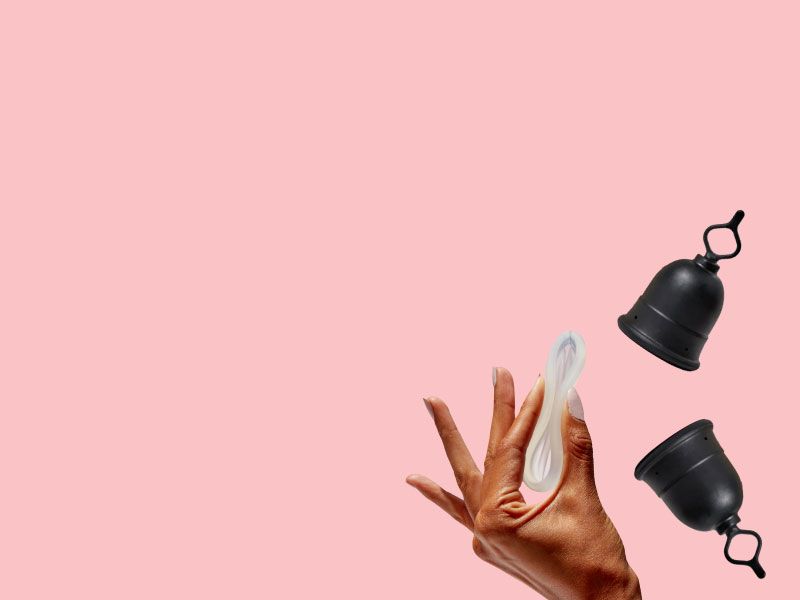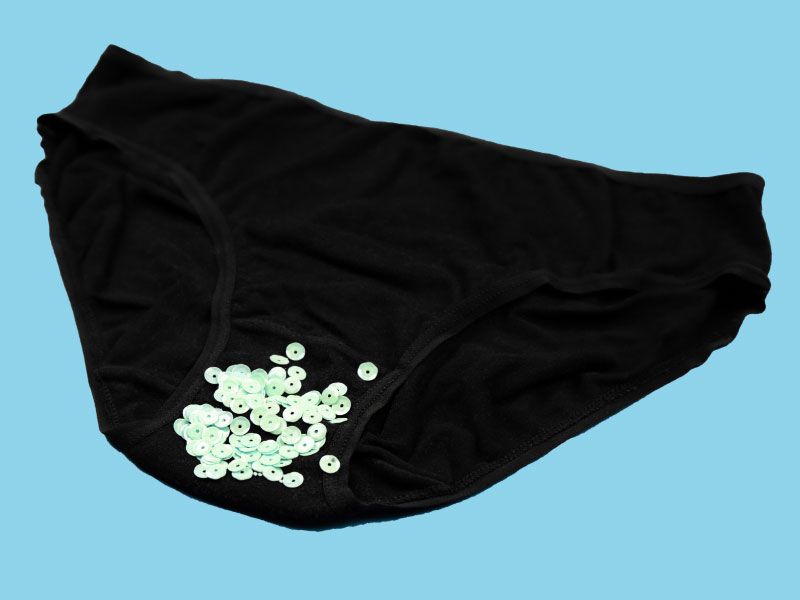
What You Need to Know
About Period Products
and Vaginal Infections
By Kathleen Morrison and Flex
January 12, 2024
Most of us will experience yeast infections, UTIs, or BV at least once during our lives, and many of us will continue to experience recurrent infections or chronic symptoms. These symptoms can be uncomfortable, annoying, and downright frustrating, especially when you need to visit the doctor and get treatment over and over again. Many people find their symptoms coincide with certain times during their menstrual cycle and you may begin to wonder if your period products are playing a role. Let’s get into it.
Can your period trigger vaginal infections? Many women with recurrent infections find that they experience cyclical symptoms before, during, or after their periods. Hormonal ups and downs and the introduction of menstrual blood into the vaginal canal can alter vaginal pH and leave an opening for yeast and bacteria to multiply.
Let’s brush up on some high school chemistry—pH stands for “Potential Hydrogen” and refers to the concentration of hydrogen ions in a solution. The pH of water is 7.0 (neutral). Anything below that number is acidic, anything above it is more basic. Typically, a healthy vagina has a pH of 4.5, which is fairly acidic. Menstrual blood has a pH of 7.4 which is very basic. Why is this relevant? When menstrual blood sits in the vagina for a long time, via a tampon, that will raise the pH to a more basic level. This is important to think about because when our vaginal pH is more acidic it helps protect us from yeast and bacterial infections in the vagina. When our vaginal pH becomes too basic, it can lead to symptoms like vaginal discharge, vaginal odor, and often infection!
How tampons and pads affect vaginal health
Around 43 million women use tampons daily, yet tampon companies aren’t required to list all the ingredients used in their products. While tampons are subject to inspection by the FDA and manufacturers must submit safety regulation reports, tampon companies often hide behind the concept of “trade secrets,” which allows them to keep the details about fragrances in pads and tampons confidential so competitors can't copy the formulas. This secrecy is especially concerning because the vaginal environment is uniquely vulnerable.
The vaginal mucosa, the tissue of the vagina, allows for direct absorption of compounds directly into the bloodstream—this is true of helpful medicines like vaginal moisturizers or Boric Acid suppositories, but it’s also true for harmful chemicals and preservatives. Why is this important, you ask? A few ingredients in tampons have raised flags in the health world.
Dioxins
In 1994, the Environmental Protection Agency (EPA) reported that dioxins are known to cause cancer in animals, and probably cause cancer in people. The EPA also discovered that people exposed to high levels of dioxins may be at risk for a damaged immune system, increased risk of pelvic inflammatory disease (PID), and reduced fertility. One study found that 80% of monkeys exposed to dioxin developed endometriosis, a painful disease in which uterine tissue grows outside the uterus, frequently leading to infertility. Yet, until the late 1990’s, the bleaching process involved in tampon manufacturing left traces of dioxins in tampons. Due to the levels of dioxin, that method has been replaced with a chlorine-free bleaching process.
While the level of dioxin has been reduced due to new chlorine-free bleaching methods, there are still traces of dioxin found in tampons, even in 100% cotton tampons!
Fragrances
Fragrance formulas are considered trade secrets. For this reason, they may contain any number of harmful ingredients which can impact fertility, hormones, birth defects, allergies, and cancer. It’s always best to choose unscented tampons for your vaginal health and to be mindful of the potential for irritation from scent ingredients.
Pesticides
According to the Pesticide Action Network, farmers are forced to use some of the most hazardous pesticides on their cotton fields, and the WHO has classified many cotton pesticides as “extremely or highly hazardous.” These pesticides have been linked to infertility, neurological dysfunction, and developmental defects. While the FDA urges that tampons be “pesticide free,” there is no real way to enforce this due to the lack of regulation or testing associated with tampons.
How are sustainable period products different?
Sustainable period products are better for you and the environment. A few of our favorites are reusable cups and discs, like those from Flex. Reusable period products are typically made of silicone and can be sanitized and reused safely month after month to catch and dispose of period blood.
While discs and cups sit in different places within the vagina (discs sit in the vaginal fornix—right under the cervix, while cups sit in the canal), they both collect blood versus absorbing it like a pad or tampon. Many people report that they are more comfortable, hygienic, leak-proof, and cost-effective than tampons. These products are body-safe and made with medically inert material that won’t disrupt your vaginal pH or promote the growth of toxic bacteria that can cause harmful infections.
Pros of period cups/discs
- Fewer leaks. Period cups use suction to create a seal within the vaginal canal, while period discs have a suction-free design that utilizes your pelvic bone to stay secure, which can help prevent leaks.
- Set it and forget it. Most discs and cups can be left in place for up to 12 hours and can hold much more liquid than tampons, so you can go about your day without having to think about your period.
- One product for all flows. Discs and cups are designed to provide protection regardless if it’s a light day or super heavy. No more having to stock light, regular, super, ultra, anything anymore.
- Cost effective. Your days of having to purchase and repurchase disposable period products are over.
Never run out. Never again reach into your tampon box to find it empty.
- Better for the environment. Take disposable pads and tampons out of your local landfill—a single woman can use up to 12,000 tampons in her lifetime!
Cons of period cups/discs
- A higher upfront cost. Reusable cups and discs cost more upfront because they can last for years. Plus, by purchasing from a reputable brand, you can ensure the materials are medical-grade and high-quality.
- Trial and error. Using these devices can be tricky, and a little messy, at first—practice makes perfect!
Does using a period cup help prevent infections?
In a new Kenya-based study from University of Illinois Chicago, researchers looked at the impact of using a menstrual cup on teenage girls' health. The research, which was funded by the National Institutes of Health, followed 436 Kenyan secondary school girls, half of whom were given menstrual cups. They were tested every six months for bacterial vaginosis, and at 12 months and 30 months for sexually transmitted infections. The researchers also tested participants’ vaginal microbiome to determine the relative prevalence of beneficial and harmful bacteria. The results of this study were fascinating! The study found the girls with menstrual cups were 26% less likely to have bacterial vaginosis and were 37% more likely to have an optimal vaginal microbiome than the girls who didn’t receive a cup. According to the study, the menstrual cups did not appear to decrease the risk of sexually transmitted infections, but after controlling for confounding factors, such as age and whether the girls were sexually active, they did see a decrease in STIs among those using a menstrual cup. What caused this reduction in infections? Menstrual cups collect blood and so it does not sit in the vaginal vault, unlike tampons that allow continued contact between absorbed blood and vaginal tissue. Why is this important? Menstrual blood is more basic—changing the vaginal pH and allowing for more opportunistic infections like BV and yeast infections. Menstrual cups maintain the acidic environment, which optimizes vaginal health!
Overall, there are pros and cons to using both tampons and menstrual cups/discs. Sustainable period products are better for the environment, they can be reusable, worn for longer periods of time, they allow for a more acidic vaginal pH—ultimately preventing more opportunistic infections like BV and yeast infections.

